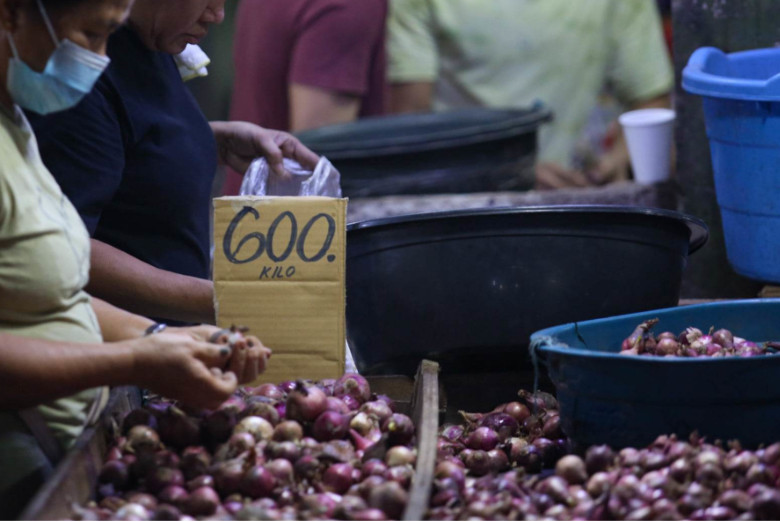Onions, the humble vegetable found in kitchens worldwide, have a significant presence in the culinary culture of the Philippines. However, despite being a staple ingredient in many Filipino dishes, onions often come with a hefty price tag in local markets. This raises the question: why are onions so expensive in the Philippines? In this article, we’ll delve into the layers of this issue to understand the factors contributing to the high cost of onions in the country.
Historical Context
To understand the current pricing dynamics of onions in the Philippines, it’s essential to delve into the country’s historical context of onion cultivation and trade. Onions are not native to the Philippines and were introduced during the Spanish colonial period. Since then, they have become integral to Filipino cuisine, featuring prominently in dishes such as adobo, sinigang, and tinola.

Factors Contributing to the High Prices of Onions
1. Climate and Geography
The Philippines’ tropical climate and geographical limitations play a significant role in onion production. Onions require specific conditions to thrive, including well-drained soil and a temperate climate with distinct seasons. However, the Philippines’ climate, characterized by high temperatures and humidity, is not conducive to onion cultivation. As a result, local production falls short of meeting the demand, leading to a reliance on imports.
2. Import Dependency
Due to limited domestic production, the Philippines heavily relies on imported onions to meet the demand. Importing onions incurs additional costs, such as tariffs, taxes, and transportation expenses, contributing to the overall price of onions in the local market. Fluctuations in international market prices and currency exchange rates also impact the cost of imported onions, further exacerbating the situation.
3. Transportation and Distribution
Onions are typically grown in regions with suitable climates such as the United States, China, India, and Pakistan. Transporting onions from these countries to the Philippines involves logistical challenges and expenses. The perishable nature of onions requires efficient transportation and storage facilities to maintain quality and freshness. Any disruptions in the supply chain, such as delays or damage during transit, can increase consumer prices.
4. Onion Market Dynamics
In addition to external factors such as climate and imports, internal market dynamics also contribute to the high prices of onions in the Philippines. Market speculation, hoarding, and manipulation by middlemen and traders can artificially inflate onion prices, especially during periods of high demand or supply shortages. Lack of transparency and regulation in the supply chain further exacerbates these issues, making onions less accessible to consumers.
5. Seasonal Variability
Onion prices in the Philippines are also influenced by seasonal variability in production and demand. Local harvests typically occur during specific periods, leading to fluctuations in supply throughout the year. During lean seasons, when domestic production is low, the country becomes more reliant on imported onions, driving up prices. Additionally, natural disasters or adverse weather conditions can disrupt local and international onion supplies, further impacting prices.
6. Understanding Illegal Hoarding
Illegal hoarding, a clandestine practice in the supply chain, occurs when individuals or groups accumulate large quantities of goods beyond what they reasonably need or can sell in the market. These hoarded goods are often kept hidden from the market, creating an artificial scarcity that drives up prices and maximizes profits for hoarders.
7. Impact on Consumers and Economy
The high prices of onions in the Philippines significantly impact consumers and the economy. Onions are a staple ingredient in many Filipino dishes, and their high cost can strain household budgets, particularly for low-income families. Moreover, rising food prices contribute to inflationary pressures, affecting overall consumer purchasing power and economic stability.
Government Initiatives and Solutions
Addressing the issue of expensive onions in the Philippines requires a multifaceted approach involving government intervention, agricultural reforms, and market regulations. Some potential solutions include:
- Promoting Domestic Production: Encouraging and supporting local farmers to increase onion production through incentives, subsidies, and technology transfer initiatives can help reduce import dependency and stabilize prices.
- Improving Infrastructure: Investing in transportation, storage, and cold chain infrastructure can enhance the efficiency of onion distribution and reduce post-harvest losses, ensuring a steady supply of affordable onions in the market.
- Market Regulation: Implementing measures to curb market speculation, hoarding, and price manipulation can help prevent artificial inflation of onion prices, ensuring fair pricing for consumers.
- Diversification of Cultivation: Exploring alternative onion varieties better suited to the Philippines’ climate and promoting diversified cropping systems can enhance resilience to climate variability and strengthen food security.
Final Thoughts
The high prices of onions in the Philippines are influenced by a combination of factors, including climate limitations, import dependency, transportation challenges, market dynamics, and seasonal variability. Addressing this issue requires coordinated efforts from the government, agricultural stakeholders, and market regulators to promote domestic production, improve infrastructure, regulate markets, and diversify cultivation. By unraveling the layers of this complex issue, stakeholders can work towards ensuring a more affordable and sustainable supply of onions for Filipino consumers.
See Also:
- Soybean Farming and Production Guide
- The Potential Profit of Rabbit Farming in the Philippines
- Calamansi Farming and Production Guide
- Black Soldier Fly Farming: A Buzzing Opportunity in the Philippines?
- 12 Health Benefits of Pinto Beans, Description, and Side Effects
